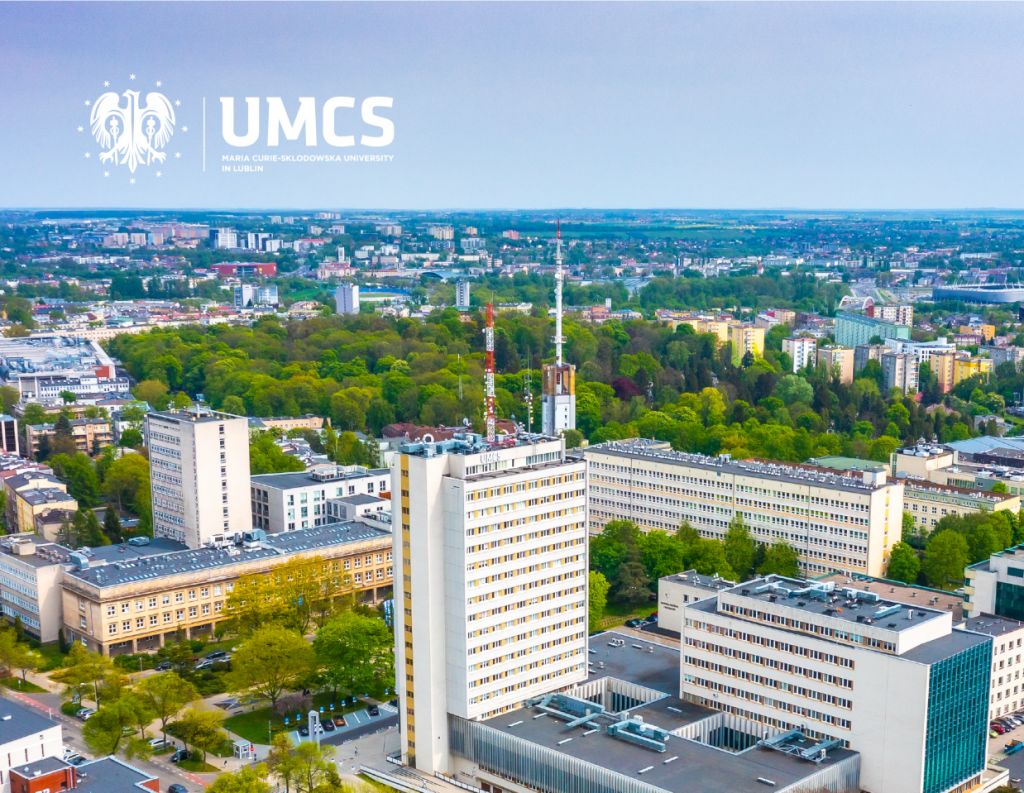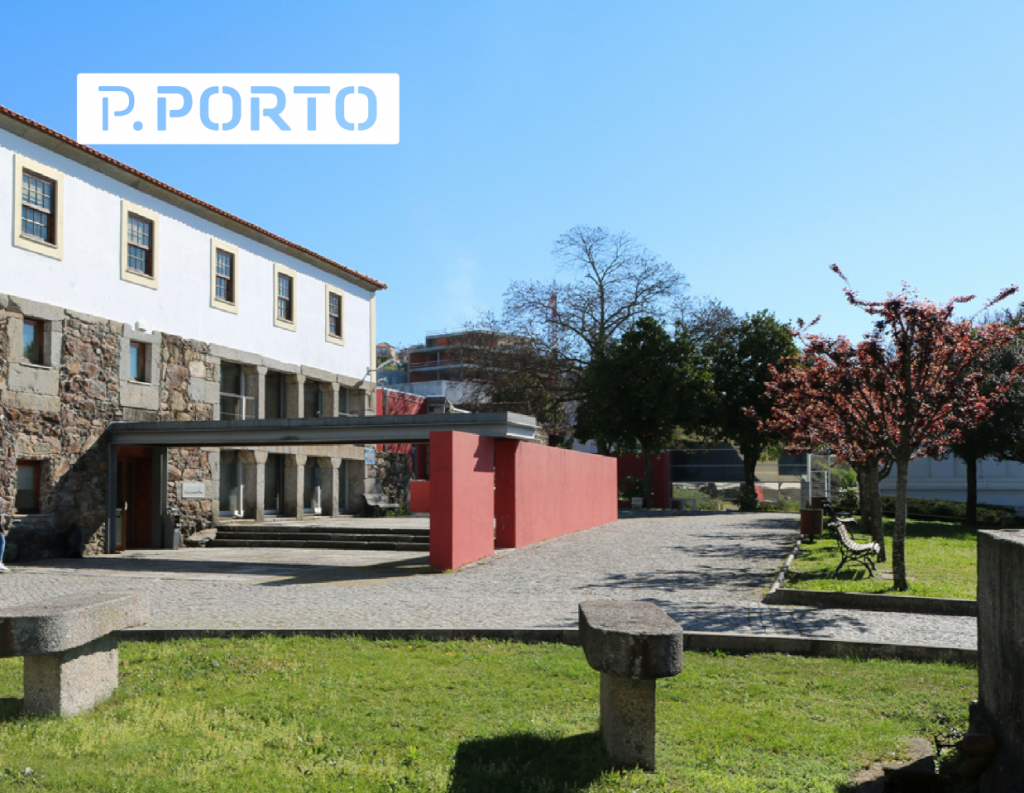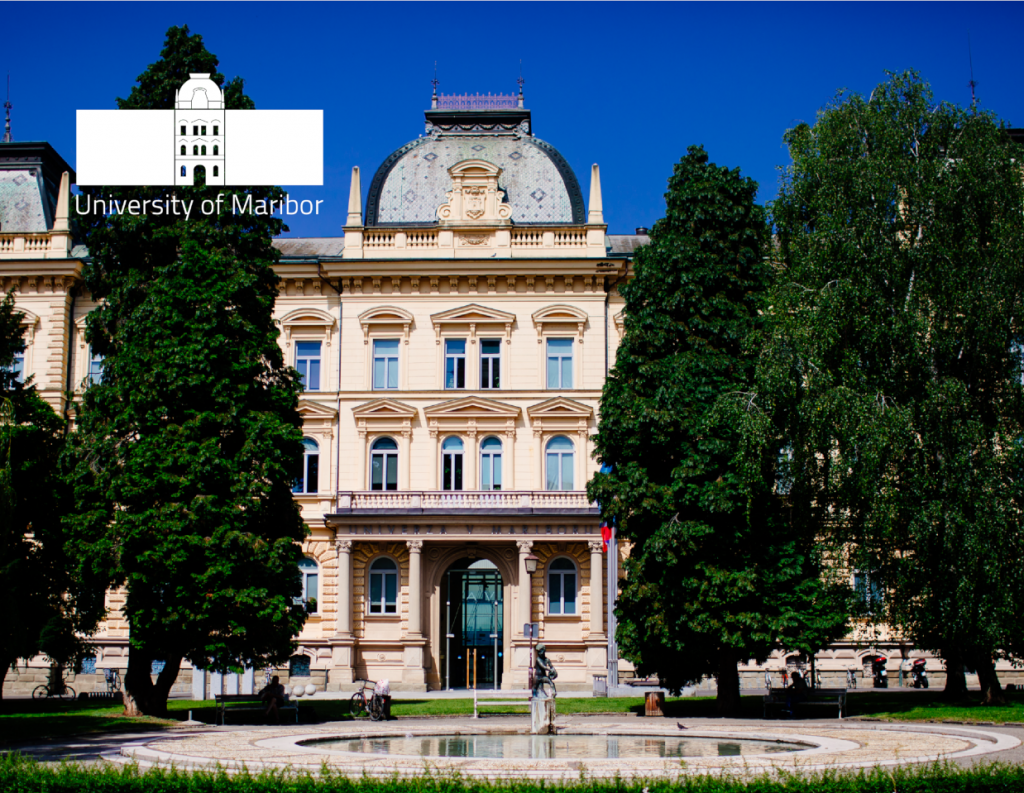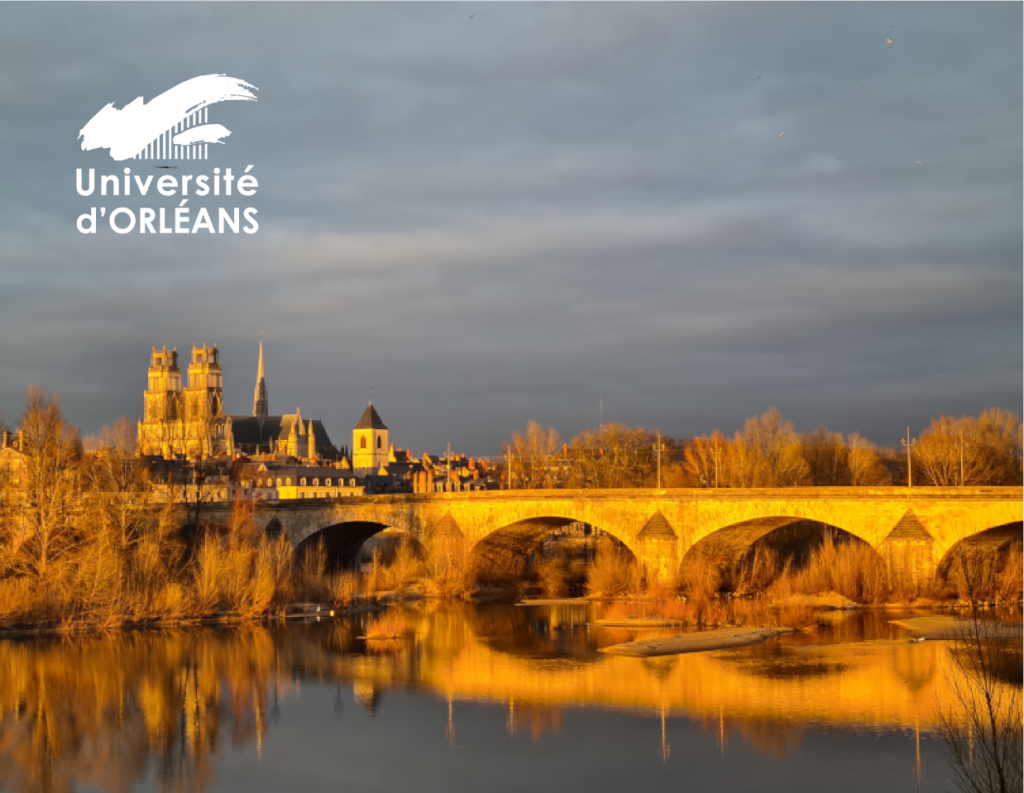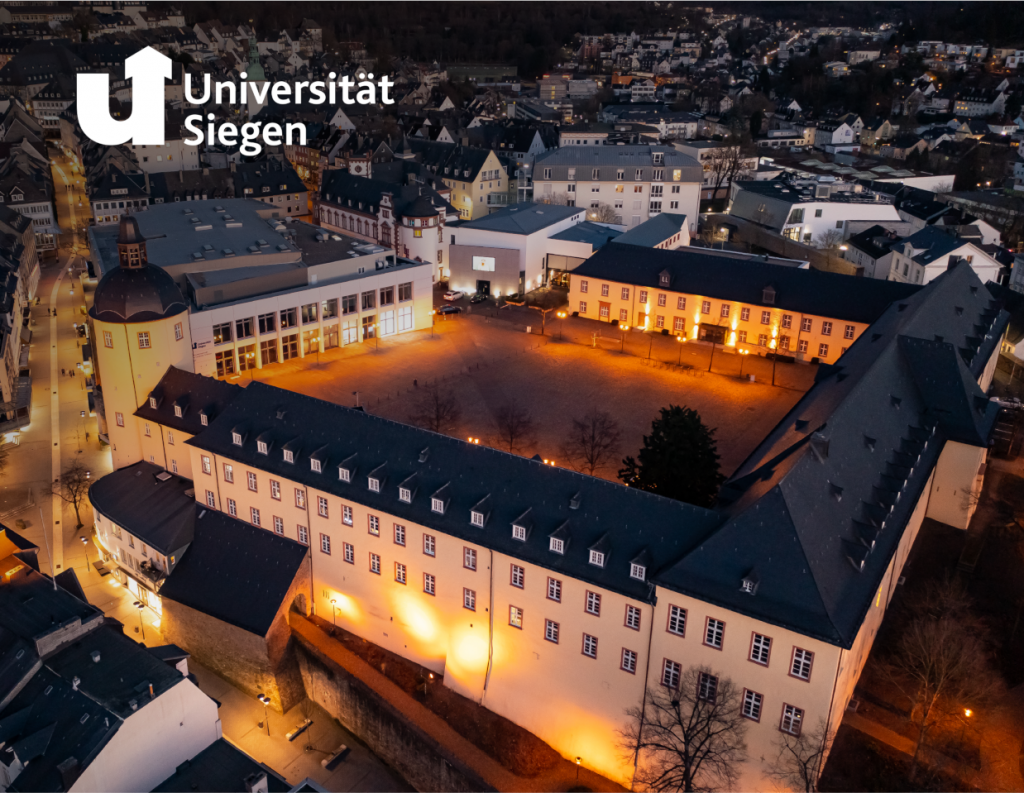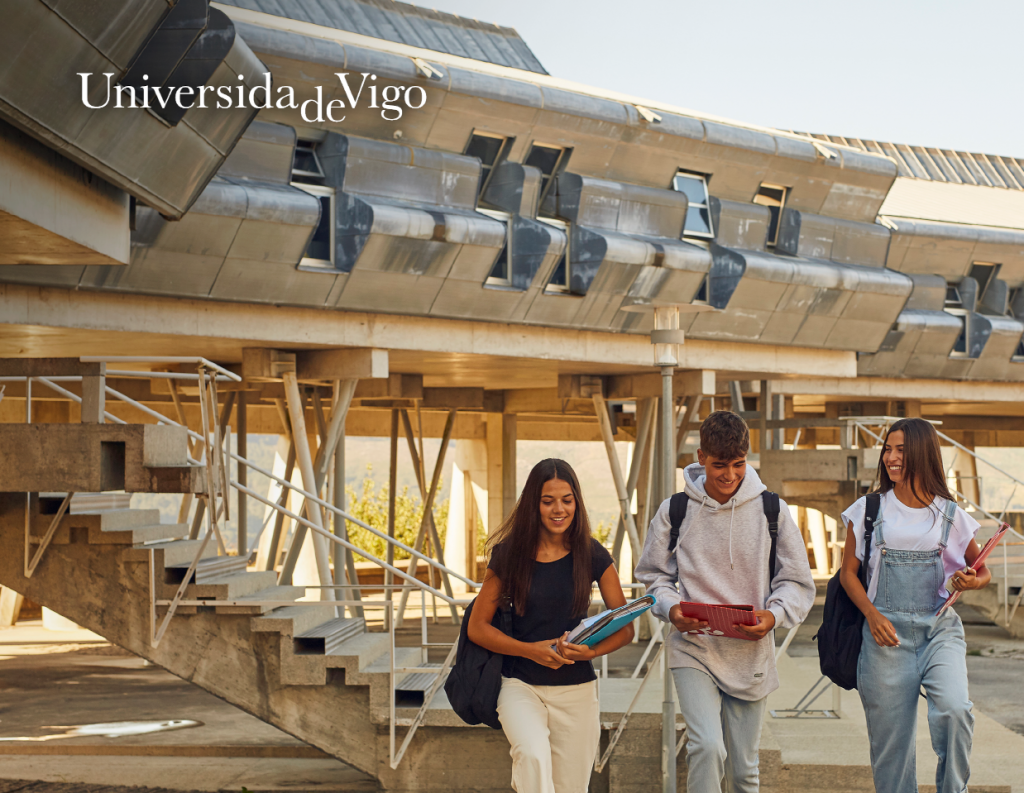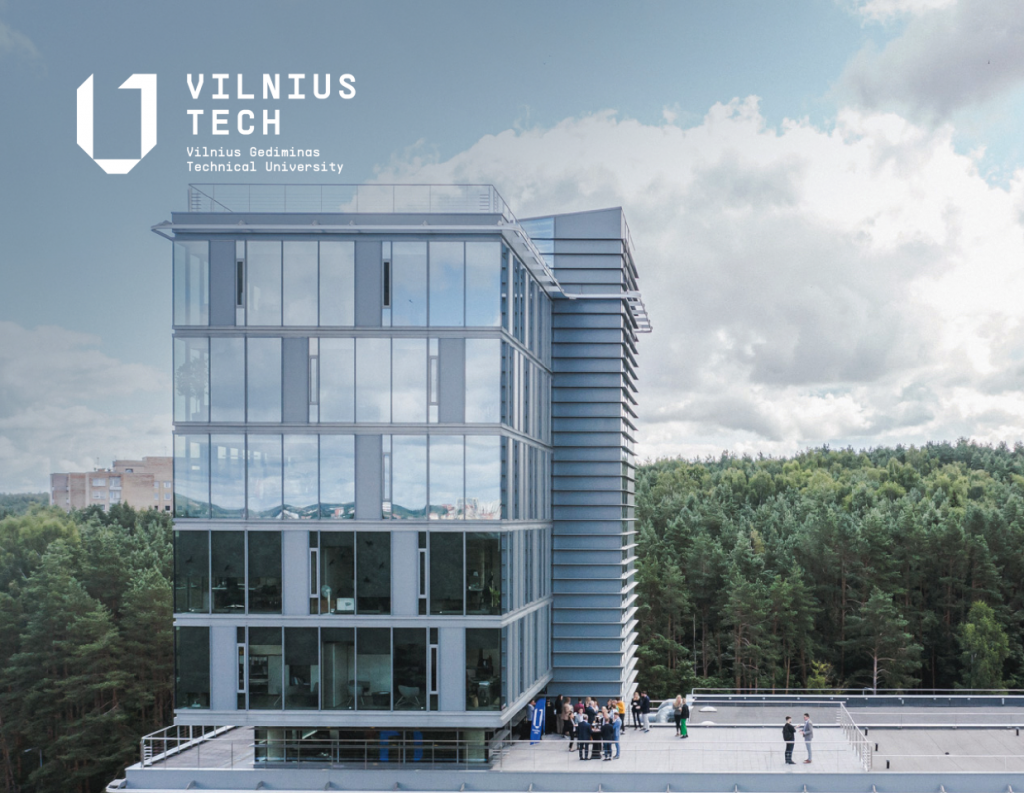ATHENA Members
Hellenic Mediterranean University, Greece
Founded in: 1983
Students: 21,000
Academic Calendar:
Student Life: The opportunities in intellectual and entertaining Student activities are many and developing rapidly with the support of the Institution. New Students have personal advisory support during arrival and throughout their studies, from the Counseling and Psychological Social Support Center.
The HMU provides free feeding to approximately 3000 students in its restaurants, in buildings of the Institution in Heraklion, and its Departments, situated in the cities of Chania, Rethymnon, Agios Nikolaos and Sitia.
About the university: The HMU of Crete was established in 1983 aiming at offering technological education.The Institute is a part of the higher education system of Greece and it provides undergraduate and postgraduate education services. It offers 15 Bachelor degrees and postgraduate studies leading to Master of Science degrees. It focuses on research and innovation as well as lifelong learning and it offers technological and consultancy services of high quality.
Its’ aim is to make sure study programs are well structured and efficient, that there are successful graduate placements and that student services such as accommodation and restaurant facilities.
Spiritual, artistic and entertainment activities in and around the Institute are varied and shared by students and staff, with the financial support of HMU Crete. Personal care and advice is provided to new incoming students by the International Office and skilled staff at the Schools.
Inhabitants country: 10.64 million
Inhabitants city: 174,000
Highlights/Famous for: its enormous Minoan palaces, such as the Palace of Knossos, Phaistos, Malia, and Zakros
What to do:
- Laze about one of the most beautiful beaches of Crete: the Balos Lagoon.
- Hike the Samaria Gorge.
Discover the Archeological Museum of Heraklion. - Visit the ruins of the Palace of Knossos.
- Stroll through the picturesque streets of Rethymnon.
- Discover the Botanical Garden of Crete.
Greece’s largest island, Crete is an ‘arch’ of exceptional natural beauty, with a unique Mediterranean history and civilisation.
Crete is an ideal destination for all kinds of sports and outdoor activities. Hiking: Crete is famous for its canyons, and its gorges are an ideal natural setting. Leading the way are the Samaria Gorge, as well as the Amba, Tripiti, Kourtaliotiko, Kamaraïko, Ethia, Elinga and Ha gorges. These places are safe, and the landscapes you’ll pass through are incomparably beautiful and diverse.
5 Schools
- Department of Electronic Engineering
- Department of Electrical and Computer Engineering
- Department of Mechanical Engineering
School of Management and Economics Sciences
- Department of Management Science and Technology
- Department of Business Administration
- Department of Accounting and Finance
Marie Curie-Sklodowska University, Poland
Founded in: 1944
Students: 36,000
Academic Calendar: Winter Semester (October – mid-February) ; Summer Semester (February – June)
Student Life: At UMCS we encourage students to be vigorous and respectful as a means to understanding the world and each other. Life on the UMCS campus will be stimulating and you will experience an exciting social life with peers who care deeply about their studies and the world around them.
About the university: The Marie Curie-Skłodowska University in Lublin is the largest public university in Poland on the eastern side of the Vistula River. We are an institution deeply rooted in the region, where since 1944, we have been acting as a cultural and opinion-forming factor, and we have made a significant contribution to building a knowledge-based economy. Nearly 260 thousand Graduates have completed our Alma Mater.
About 18,000 students study at UMCS, including 1,800 foreigners (i.e. 10% of all people studying at the University) representing nearly 45 countries worldwide. For comparison, in 2010/2011, only about 200 foreigners from abroad studied at our University.
Inhabitants country: 37.6 million
Inhabitants city: 330,000
Highlights/Famous for: Lublin’s Coat of Arms is a Billy Goat
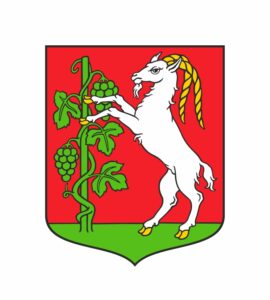
What to do:
- Visit the central square, Rynek, and admire the painted façades.
- Discover the Saint Trinity Chapel and its byzantine frescoes.
- Walk along the same path of past Polish kings while visiting the Castle of Lublin.
- Discover the traditional Polish houses at the Lublin Open Air Village Museum.
Lublin is the largest city in eastern Poland and serves as an important regional cultural capital. Since then, many important international events have taken place here, involving international artists, researchers and politicians. The frescos at the Holy Trinity Chapel in Lublin Castle are a mixture of Roman Catholic motifs with eastern Byzantine styles, reinforcing how the city connects the west with the east.
Lublin aims to be known as the Polish Capital of Festivals.Most years, Lublin increases the number of festivals held in the city.
Lublin is a city of culture, the most important centre of cultural life in Eastern Poland.
Lublin’s culture is unique and inclusive, authentic and original, since it is rooted in the local context. It is characterised by participation and diversity, encounters of different cultures, religions and ideas, motivating inhabitants to discover themselves, other people and the world.
Lublin’s culture also represents the most important phenomena of Polish and global culture.
Lublin’s greatest festivals: https://lublin.eu/en/what-to-see-do/events-festivals/
Polytechnic of Porto, Portugal
Founded in: 1985
Students: 21,000
Student Life: The P.PORTO guarantees 56 degrees, 62 master’s degrees and 56 postgraduate programs internationally recognized by the distinctive pedagogical model based on the central articulation between teaching and research, the dynamic interaction with the world of work, according to a knowledge- to do where the real teaching contexts are a strong and structuring component, a model oriented towards the development of transversal competences, entrepreneurship, culture as personal and collective experience and active citizenship.
About the university: There are 8 Schools spread over 3 campuses, where thousands of people study, research, teach, and innovate every day.
Today we can be proud of the high standards of our teaching; the quality of our learning and training infrastructures, scientific research and physical activity; our partnerships, protocols and cooperation in Portugal and around the world; the effervescence of our cultural agenda.
Today, more than ever, we have our eyes on the future, without forgetting a past that makes the Polytechnic of Porto one of the most prestigious institutions of higher education in Portugal. And the best is yet to come.
Inhabitants country: 10.33 million
Inhabitants city: 238,000
Highlights/Famous for: its many bridges.
What to do:
- Stroll through the old Porto, La Ribeira.
- Visit the Palacio da Bolsa, the jewel of Porto.
- Shop at praça da Libertade.
- Discover some of the most beautiful libraries in the world: Lello and Irmão.
- Learn all about wine at Vila Nova da Gaia.
- Cruise through the Douro river from Porto.
Located along the Douro River estuary in northern Portugal, Porto is one of the oldest European centers, and its core was proclaimed a World Heritage Site by UNESCO in 1996, as the “Historic Centre of Porto, Luiz I Bridge and Monastery of Serra do Pilar”. The historic area is also a National Monument of Portugal. The western part of its urban area extends to the coastline of the Atlantic Ocean.
Port wine, one of Portugal’s most famous exports, is named after Porto, since the metropolitan area, and in particular the cellars of Vila Nova de Gaia, were responsible for the packaging, transport, and export of fortified wine. In 2014 and 2017, Porto was elected The Best European Destination by the Best European Destinations Agency. Porto is on the Portuguese Way path of the Camino de Santiago.
- Porto’s historic center is a UNESCO World Heritage Site.
- The name of the city Porto comes from a term “Portus Cale”
9 Schools
ISCAP – School of Accounting and Business
ESMAE – School of Music and Performing arts
ESTG – School of Management and Technology
ESHT – School of Hospitality and Tourism
ESMAD – School of Media Arts and Design
ESEIG – School of Management and Industrial Studies
University of Maribor, Slovenia
Founded in: 1975
Students: 14,500
Academic Calendar: Winter Semester: October to February ; Summer Semester: February to July
Student Life: The University of Maribor offers its students a vibrant and varied student life. It provides a wide selection of extracurricular activities (some of which are also credit-valued) in the field of culture, sports, and humanitarian activities. Enrich your free time and spend it well! You can join student associations and meet new friends. You will gain new experiences in extracurricular activities at the UM. Do not forget about mobility and exchange options!
About the university: The University of Maribor is the second largest university in Slovenia and is among the 4% of best Universities in the world.
The University of Maribor puts the principles of social responsibility and sustainable development at the forefront of its activities. The strategy of the University of Maribor pursues an inclusive, innovative and connected higher education space, which will train active, critical and responsible citizens, ensure the quality of education and research, academic integrity and take care of the sustainable development of society.
The vision of the University of Maribor points out that we are an institution that will be a “globally recognizable innovation ecosystem in which employees and students will be happy to create.”
Inhabitants country: 2,1 million
Inhabitants city: 112,000
Highlights/Famous for: the oldest wine in the world
What to do:
- Discover the Lent neighbourhood with its Water Tower and see the oldest fruit-bearing grapevine in the world
- Take a guided tour through the underground “hidden” wine tunnels
- Climb up Piramida Hill and enjoy the view of the city and Drava River before relaxing in Mestni Park
- Visit the Maribor Castle, Cathedral, Synagogue and the Regional Museum to learn about the city’s history
- Go on a lazy boat cruise along the drava
Maribor, located in the north-eastern part of the country and close to the Austrian border, is Slovenia’s second biggest city. It lies within a wine-growing area, surrounded by the forests of Pohorje and alongside the river Drava.
Maribor is known for wine and culinary specialities of international and Slovene cuisine (mushroom soup with buckwheat mush, tripe, sour soup, sausages with Sauerkraut, cheese dumplings, apple strudel, special cheesecake called gibanica)
Every June, the two-week Lent Festival (named after the waterfront district called Lent) is held, with hundreds of musical, theatrical and other events.
University of Orléans, France
Founded in: 1306
Students: 20,000
Academic Calendar : Fall Semester : mid-September to mid-January ; Spring Semester : mid-January to mid-June
Student Life: The University has 6 off-site campuses (in Chartres, Bourges, Châteauroux, Blois, Issoudun and Tours).
Campus life has many things to offer including more than 170 student associations (like the Erasmus Student Network). Once you become a student, you have access to induction week, cultural visits of the châteaux, and many sport activities.
On campus, there is a cultural center called Le Bouillon where you can attend concerts and exhibitions and watch theater and dance recitals. If you are a foody, there are 15 university restaurants with plenty of food options. You even have access to the medical center on campus.
International students also get to use the Welcome Center upon their arrival and have support and counseling.
About the university: Its international vocation is confirmed with 14% of students of foreign nationality and nearly 90 countries represented. The UO was recognised as a European University through the ATHENA alliance and awarded the “Human Resources Excellence in Research” HRS4R label.
The University’s capacity for innovation is reflected in the dynamism of its research and technology transfers to regional, national and international companies.
The Orléans Campus benefits from an ecosystem of scientific excellence with 25 research units.
Its training offer, rich in professional courses, is developed in close connection with research. The facilities for welcoming and helping students and adults to enter the job market help to make the University of Orléans a major player in regional development.
Inhabitants country: 67 million
Inhabitants city: 116,000
Highlights/Famous for: Joan of Arc is a figurehead in the city of Orléans and every year, on the 8th of May, a parade is dedicated to her. Inside the Cathedrale Sainte-Croix, her entire history is told on stained glass.
Throughout History, Orléans was known for its commerce as the Loire River is crossing the city. Today, the quayside welcomes walkers, cyclists and events. Orléans is the center point for the Châteaux surrounding the Loire Valley (such as Chenonceau, Chevergny, Chambord etc).
What to do:
- Visit the Cathedrale Sainte-Croix
- Stroll through the historic old town and feel the medieval spirit
- Find all the Monsieur Chat tags all over the city
- Rent a Bike and ride along the Loire River
- Visit one of the many beautiful castles in the Loire Valley (Chambord, Villandry, Chenonceau, Cheverny etc.)
- In 1560, King Francis II, son of Catherine de Medici and Henry II, died in the Hôtel Groslot d’Orléans with his wife by his side Mary Stuart (also known as Mary Queen of Scots).
- Several highly known figureheads studied at the University of Orléans such as Molière, Charles Perrault and Jean de La Bruyère.
- Saint Aignan contributed through prayer and his skill as a negotiator to save the city of Orléans, in 451, from total destruction by the Huns. A local legend tells that, during the siege of the city of Orléans by the Huns, the relief troops of the Roman general Ætius were late in arriving. Saint Aignan invoked heaven by throwing a handful of sand from the Loire from the top of the ramparts… Each grain turned into a wasp and a cloud of stings managed to put the barbarians to flight. Then Attila decided not to attack the city and to bypass it.
3 Colleges (UFR):
4 University Institutes of Technology (IUT) : Bourges, Chartres, Indre, Orléans
1 Observatory of the Sciences of the Universe in the Centre-Val de Loire region (OSUC)
1 National Higher Schools for Professors and Educators (INSPE)
1 Engineering School (Polytech)
University of Salento, Italy
Founded in: 1955
Students: 18,000
Student Life:
About the university: The University of Salento is a dynamic and young university, eager to expand and make a name for itself at both national and international levels. Since its establishment in 1955, the Università del Salento has been focused on promoting knowledge, merit, and skills, and has provided a diverse range of educational opportunities across various fields, including law, science, economics, engineering, humanities, and media studies. The university offers academic programs for a range of professions, as well as post-graduate and specialist courses tailored to meet the needs of the workplace. The university has eight departments that provide services and information for students, along with thirty-three research centres spread throughout the Salento area. In recent years, the university has grown rapidly, strengthening its role as the keystone of the local cultural and social system. The university also houses a Ph.D. School and Post-graduate schools for Cultural Heritage and for the Legal Professions. Another prestigious institution, the ISUFI Grandes écoles school, offers high-level undergraduate and postgraduate courses for scholarship students to promote excellence.
Inhabitants country: 58.94 million
Inhabitants city: Lecce, 98,000
Highlights/Famous for: The Puglia region is known for decadent olive oil, cured meats and cheeses, precious pasta shapes and bold, flavourful wines.
What to do:
- Admire the Roman Amphitheatre of Lecce.
- Wander through the Historical Center.
- Step inside Lecce Cathedral.
- Experience the ambiance of Piazza Sant’Oronzo.
- Explore Castello Carlo V.
Lecce is a charming town that is known for its liveliness and attractiveness. The area is rich in history and traditions, yet it is also determined to keep up with economic and social changes and cultural developments. The Salento area, which surrounds Lecce, is a friendly and safe place, with a lot of natural beauty, architectural wealth, and hospitable people. Lecce is the principal city of the Salento Peninsula in South-Eastern Italy, with a population of about 95,000 inhabitants. The area, which is situated between the Adriatic and Ionian seas, offers a variety of natural landscapes thanks to its magnificent geographical position.
Lecce is famous for its Baroque style, which has earned it the nickname “the Florence of the South.” The churches and historical monuments are built with the golden-yellow and malleable “Lecce stone.” The town center is bustling with outdoor meeting places and clubs that attract a young crowd who enjoy the nightlife. The locals are known for their laid-back and hospitable attitude.
The area is also known for its traditional products such as olive oil and wine, which are appreciated all over the world and form the basis of a succulent gastronomy and a wealth of traditional dishes.
It is nicknamed the “Florence of the South”.
University of Siegen, Germany
Founded in: 1972
Students: 15,061
Academic Calendar: Winter semester: October to March; Summer semester: April to September
Student Life: Two central campuses and several buildings are spread over the city and provided with canteens, cafeterias, and libraries. The downtown campus is in partly historic buildings such as the castle Unteres Schloss, ensuring a special study atmosphere. A popular meeting place to relax after lectures is the Krönchen, an artwork made of gold-plated iron on the top of the Nikolai Church, or the castle gardens.
The University of Siegen is proud of its great welcoming culture which is expressed by a large number of different offers and services, reaching from language courses over sports and clubs, to buddy programmes and to the Campus Radio.
About the university: The University of Siegen is a young and modern university located in western Germany. As an open-minded university, it aims to contribute to a humane future and takes responsibility for people and society, which is reflected by its claim “Shaping a humane future”.
The University of Siegen has four internationally visible and interdisciplinary profile areas: Media and Culture, Education and Social Society, Sensoric and Visual Computing, and Matter and Quantum System. In addition, there are three areas of competence (Smart Work and Smart Everyday, Nanotechnology and New Materials, Health Care and Gerontology) in which the university supports research activities that pick up on forward-looking trends and shape and help shape new areas of research.
Inhabitants country: 83 million
Inhabitants city: 102,000
Highlights/Famous for: its mining history
What to do:
- Visit the two castles (Oberes Schloss and Unteres Schloss) and relax in the flowery castle garden of the Oberes Schloss
- Take a guided tour in one of the mines like the Reinhold Forster Erbstolln
- Get inspired and be stunned in the Museum für Gegenwartskunst Siegen, the museum of modern art
- Hike or go mountain biking on the Rothaarsteig, the regional long-distance trail in the Rothaar Mountains
- Stop at the Alter Flecken in Freudenberg, South Westphalia’s most treasured scene
Siegen is located in the Western part of Germany, in the heart of the Siegerland, a beautifully wooded area with easy access to larger cities like Cologne or Düsseldorf. The city looks back upon a long history of ore-mining, represented by the bronze statues Henner and Frieder, embodying smeltery and mining. Siegen is also the birthplace of the Baroque painter Peter Paul Rubens whose birthplace can be found in the historic centre as one of the many picturesque half-timbered houses with slate-covered roofs.
- Trees, bushes, and other plants grow on 86% of the city’s surface area. This makes Siegen the greenest of all German cities with more than 100,000 inhabitants.
- The Kölner Straße in Siegen is the steepest pedestrian zone in Germany with an ascent of ten percent.
- The castle Unteres Schloss, which now houses the School of Economic Disciplines and a library, was a prison until 2011, when the last 70 inmates left the site.
Universidade de Vigo, Spain
Founded in: 1990
Students: 20,000
Academic Calendar: Winter Semester: September to January; Summer Semester: January/February to June
Student Life: The University of Vigo is divided among three campuses and cities with focusses on different parts of study. The main campus being the “Vigo campus” about 12 km from the city center of Vigo and easily accessible by public transportation. The “Campus Auga”, located in Ourense about 100km inland from Vigo, focussed on all studies related to water. Last but not least the campus in Pontevedra also known as “Campus Crea” with a focus on more creative study fields.
Cultural activities such as workshops, theatre and film clubs and sports facilities such as swimming pools, gyms, tennis courts and rock-climbing walls constitute an essential part of university life and are regarded as crucial to personal and social development. Which is why every campus has their own offers to provide the best experience for students possible.
About the university: The Universidade de Vigo is a young and dynamic institution that offers a wide range of training programs in the three specialized and innovative campuses that make it up.
In our campuses you can study 121 official degrees and masters, 39 doctoral programs, 7 joint programming degrees and 4 degrees with mutual recognition agreements with foreign universities. We also offer hundreds of programs, events, workshops and language courses and, of course, our Seniors university program.
The Universidade de Vigo has been built on deep positive values, based on transparency and good management, integration, equality, diversity and respect for the environment. We are committed to specialization and quality research and, as an institution committed to the social and economic environment, the transfer of knowledge to society is central for us, so we strive for research to continually revert to social development.
About the university: The Universidade de Vigo is a young and dynamic institution that offers a wide range of training programs in the three specialized and innovative campuses that make it up.
In our campuses you can study 121 official degrees and masters, 39 doctoral programs, 7 joint programming degrees and 4 degrees with mutual recognition agreements with foreign universities. We also offer hundreds of programs, events, workshops and language courses and, of course, our Seniors university program.
The Universidade de Vigo has been built on deep positive values, based on transparency and good management, integration, equality, diversity and respect for the environment. We are committed to specialization and quality research and, as an institution committed to the social and economic environment, the transfer of knowledge to society is central for us, so we strive for research to continually revert to social development.
Inhabitants country: 47 million
Inhabitants city: 290,000
Highlights/Famous for: its enormous fishing port
What to do:
- Visit Castro Fortress and enjoy the view over the city & sea from up the castle
- Discover the stunning archipelago Cíes Islands and go for a hike
- Relax at one of more than 45 beaches in Galicia, such as Playa Samil
- Stroll around Casco Vello, the Old Town made of two-story stone houses
- Visit one of the many museums (Contemporary Art Museum, Pazo Quinines de Leon, Galician Museum of the Sea etc.)
The city of Vigo is located in the north-western part of Spain, close to the Portuguese border, in the autonomous community of Galicia also called “the land of a thousand rivers”. Galicia enjoys its own
language and culture.
The city itself combines tradition and modernity: While the city centre is home to the “golden mile of art”, the picturesque historic part, the surrounding area is part of the “Ensanche”, the modern commercial and cultural area. Due to being home to the biggest fishing port in Europe, Vigo also enjoys a very good reputation for its fish tapas.
Pirate Past: The Cies Islands act as an Atlantic Ocean gateway to the estuary of Vigo, which made them highly attractive to Barbary and English pirates.
A University with a View: The Vigo campus is located in Lagoas-Marcosende, offering stunning views of the Atlantic Ocean and the surrounding Galician landscape.
Young but Mighty: Despite being founded in 1990, UVigo has quickly gained recognition, ranking among the 900 best universities worldwide according to the Shanghai Ranking.
Sustainability & Innovation: The university is ranked among the 40 best in the world for clean energy and equality, according to the Times Higher Education Impact Rankings.
11 Schools
- Graduate school of computer engineering
- School of Aeronautical and Space Engineering
- Ourense University School of Nursing
- School of Forest Engineering
- University School of Nursing of the Provincial Government of Pontevedra
- School of Telecommunications Engineering
- School of Mining and Energy Engineering
- School of Industrial Engineering
- EXB University Teaching School
- Meixoeiro University School of Nursing
- Povisa University School of Nursing
19 Faculties
- Faculty of Sciences
- Faculty of History
- Faculty of Law
- Faculty of Business and Tourism
- Faculty of Education and Social Work
- Faculty of International Relations
- Faculty of Fine Arts
- Faculty of Education and Sport
- Faculty of communication
- Faculty of physiotherapy
- Faculty of Management and Public Administration
- Faculty of Philology and Translation
- Faculty of Economics and Business
- Faculty of Commerce
- Faculty of Legal and Labour Sciences
- Faculty of Marine Sciences
- Faculty of Chemistry
- Faculty of Design
- Faculty of Biology
1 Institute
2 Centres
VILNIUS TECH, Lithuania
Founded in 1956
Students: 8,500
Academic Calendar : Winter Semester : September – February ; Summer Semester : February – July
Student Life: The main university campus is located in the Saulėtekis area.
It also hosts the international students’ dormitory, making life on campus easy and convenient.
VILNIUS TECH offers a wide range of activities to ensure a vibrant student experience. It is proud of its many sports and student clubs (over 70!), partially celebrating over 50 years of existence. The most significant and oldest clubs include theatre, choir and dance. VILNIUS TECH athletes take part in inter-university, national, international, European and World championships and tournaments.
Furthermore, each incoming exchange student is assigned a so called “Mentor” – a local student helping to get around.
About the university:
Vilnius Gediminas technical university (VILNIUS TECH) is an innovative Lithuanian university that prepares creative and highly qualified specialists. The university is located in Lithuania’s capital city Vilnius and it is a leader in the field of technological sciences with modern and labour market-oriented approach to studies. Scientific research and experimental development projects are carried out in 13 institutes, 3 scientific centers, 22 research laboratories.
Sustainability, connectivity, creativity, openness and innovation are values that are deeply rooted into the university’s DNA. It inspired its students to become socially responsible, creative, forward-thinking people, who bring change to the environment.
Inhabitants country: 2.7 million
Inhabitants city: 570,000
Highlights/Famous for: Vilnius Historic Centre (UNESCO World Heritage Site)
What to do:
- Stroll through Vilnius Old town and learn about it’s history
- Explore Užupis, the bohemian neigborhood / republic
- Visit the museums (KGB museum, Museum of Illusions, Energy and Tehcnology Museum, Amber Museum etc.) and the churches (St Anne’s Church, Holy Spirit Orthodox Church)
- Climb up to the top of the Hill of Three Crosses
- Get cultural and visit the art gallery or the ballet
Today Vilnius is 700 years old. Legend has it that the city started with a dream Grand Duke Gediminas had on a hunting trip. In his dream, Gediminas saw a huge iron wolf standing on a hill howling as if hundreds of wolves were trapped inside it. When the Grand Duke consulted the court magician Lizdeika, he was told that the wolf was a symbol of a great capital that would one day stand atop that hill. By 1323, Gediminas was already sending letters to European cities inviting merchants and craftspeople to visit the city. Vilnius is the capital of Lithuania and thus home to the country’s President, Seimas, Government and Supreme Court. Diplomatic missions, as well as educational, cultural, financial, research, and healthcare institutions are based here. Vilnius, the capital city of Lithuania, is a destination that is rich in history, culture, and natural beauty. This vibrant city is nestled in the heart of the Baltic region and offers visitors a unique blend of oldworld charm and modern amenities. With its picturesque old town, diverse architecture, and bustling art scene, Vilnius has become a popular choice for travelers seeking to explore the wonders of Eastern Europe.
- VILNIUS TECH engineers created the design and technical part of a PORTAL – in 2021 Vilnius and Lublin in Poland became the first two cities to connect through PORTAL. This interactive installation, is a new wave community accelerator, aiming to bring people of different cultures together and encouraging them to rethink the feeling of unity. Read more about the project here.
- VILNIUS TECH students created NanoJesus – the world’s smallest nativity scene. The scene is an exact replica of the nativity scene at the Cathedral square in Vilnius. The size of the nativity scene – just 300 micrometres (0.3 mm), and it could be placed on a single human eyelash. In this nanoscale, Baby Jesus is smaller than a human cell! Read more about NanoJesus here.
- One of the peaks of the Tian Shan Mountains is named after VILNIUS TECH. The VILNIUS TECH Tourist Club team returned in early September 2019 from a seventeen-day expedition in the Tian Shan mountains in Kyrgyzstan. The university’s tourist team was the first to ascend an unnamed peak, standing at 4682 meters, which they named VGTU (after the former abbreviation of VILNIUS TECH). Read more here.
There are 10 faculties in the university:
Antanas Gustaitis‘ Aviation Institute
Faculty of Fundamental Sciences
Faculty of Transport Engineering
Faculty of Environmental Engineering
Igor Sikorsky Kyiv Polytechnic Institute, Ukraine
Founded in 1898
Students: 36,000
Student Life: KPI is home to over 36,000 students, including around 400 international students. Living on campus fosters cultural exchange and global friendships. Each year, over 4,500 students graduate with diplomas recognized by the EU. KPI offers programs in English while allowing students to learn Ukrainian. With 16 departments and a wide range of majors, students can explore fields like IT, engineering, and radioelectronics in a dynamic academic environment.
About the university:
Founded in 1898, KPI has a rich history of academic excellence and innovation. Originally established with four departments, it has grown into a leading technical university. It overcame wartime challenges to rebuild and expand, fostering research and technological advancements. KPI has undergone several name changes, reflecting its evolution. Today, it stands as a top institution in Ukraine, recognized for its contributions to science, engineering, and global education.
Inhabitants country: 37.7 million
Inhabitants city: 2.9 million
Highlights/Famous for: Kyiv is most famous for its rich history, stunning architecture, and cultural significance.
What to do:
- Kyiv Pechersk Lavra – A UNESCO World Heritage Site and one of the most important Orthodox Christian monasteries.
- Saint Sophia Cathedral – Another UNESCO site, known for its beautiful mosaics and frescoes.
- Maidan Nezalezhnosti (Independence Square) – The heart of Kyiv’s political and social movements.
- Khreshchatyk Street – The city’s main boulevard, bustling with shops, cafes, and historical buildings
- Golden Gate – A medieval gateway that once served as Kyiv’s main entrance
- Chernobyl Tours – Many visitors take trips to the Chernobyl Exclusion Zone from Kyiv
- Kyiv’s Food & Nightlife – The city is known for its vibrant food scene, including traditional dishes like borscht and varenyky, as well as its lively bars and clubs
- Dnieper River & Parks – Kyiv’s scenic landscapes, including Hydropark and Trukhaniv Island, make it a beautiful city to explore
One of the Oldest Cities in Europe – Founded in 482 AD, Kyiv is older than Moscow and has a history dating back over 1,500 years.
Motherland Monument is Taller Than the Statue of Liberty – Standing at 102 meters (335 feet), Kyiv’s Motherland Monument is taller than the Statue of Liberty (93 meters with the pedestal).
Birthplace of the Kyiv Cake – A famous Ukrainian dessert made of meringue, nuts, and buttercream, originally created by accident at the Karl Marx Confectionery Factory.
Home to the Deepest Metro Station in the World – Arsenalna Metro Station is 105.5 meters (346 feet) deep—so deep it takes about 5 minutes to ride the escalator!
The Legend of the Founders – Kyiv was supposedly founded by three brothers, Kyi, Shchek, and Khoryv, along with their sister Lybid.
Institutes
- Educational and Research Institute for Applied System Analysis – IASA
- Educational and Research Institute of Telecommunication Systems – ITS
- Educational and Research Institute of Aerospace Technologies – IAT
- Educational and Research Institute of Institute of Nuclear and Thermal Energy – IATE
- Educational and Research Institute of Energy Saving and Energy Management – IEE
- Y. O. Paton Educational and Research Institute of Materials Science and Welding – IMZ
- Institute of Specialized Communication and Information Security – ISZZI
- Educational and Research Institute of Mechanical Engineering – MMI
- Educational and Research Institute of Printing and Publishing – VPI
- Educational and Research Institute of Physics and Technology – IPT
Faculties
- Faculty of Chemical Engineering – IHF
- Faculty of Biomedical Engineering – FBE
- Faculty of Instrumentation Engineering – PBF
- Faculty of Radio Engineering – RTF
- Faculty of Biotechnology and Biotechnics – FBT
- Faculty of Electric Power Engineering and Automatics – FEA
- Faculty of Electronics – FEL
- Faculty of Informatics and Computer Science – FIOT
- Faculty of Linguistics – FL
- Faculty of Management and Marketing – FMM
- Faculty of Sociology and Law – FSP
- Faculty of Applied Mathematics – FPM
- Faculty of Physics and Mathematics – FMF
- Faculty of Chemical Technology – XTF

